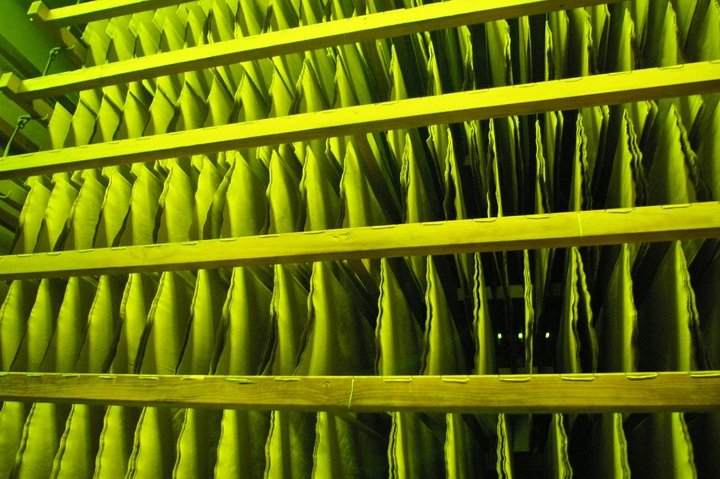Guide on How to Make Bamboo Paper
1Shares
Do you want to know how to make bamboo paper? Bamboo paper is an excellent alternative to normal paper since it is created from an organically, sustainable resource. Bamboo grows far quicker than trees and generates the same quantity of cellulose as wood pulp. It also has a greater strength in tensile tests and may be utilized for a variety of applications other than printing text on a page. It is also long-lasting, adaptable, and ecologically beneficial.
All you need to know how to produce bamboo paper at home is some fresh bamboo leaves that have been soaked in water overnight so they are malleable enough to work with. Cut down the spine of each leaf with scissors or even a sharp knife to remove the hard stem. Bamboo stalk wood may be used to make paper, woodwork, and other goods. Making your paper from bamboo is simple and enjoyable! Hence, let’s read over this blog article to have a better understanding of it. Keep reading to learn more about how bamboo paper is made.
What is a Bamboo Paper
Surprisingly, the computer revolution has not reduced our reliance on paper, as expected when computers first appeared in our homes and offices. Instead, over the last 20 years, demand for paper products has skyrocketed. Each year, per capita use of paper and cardboard in the United States, surpasses 800 pounds, putting immense strain on forests which take decades to recover.
The growing popularity of bamboo paper may help to reduce our reliance upon wood pulp in papermaking, providing some respite to our surviving forests. The Chinese have been creating paper from bamboo for over 1,500 years, but demand has recently increased significantly as customers seek ecologically friendly products made from renewable resources. Paper makers are responding to market demand by releasing new bamboo paper products that are equivalent in strength, brightness, & printability to paper manufactured from wood pulp.
How to Make Paper From Bamboo

The pulp of gigantic wood bamboo is used to make the majority of bamboo paper. Giant wood bamboo is indigenous to Asia, specifically Korea, China, and Japan. If you happen to be in an ideal bamboo forest throughout Asia, you may collect pulp off the stalks of these bamboo species. The more common bamboo species found in gardens & yards are not suitable for big lumber bamboo pulp. This is a step-by-step tutorial for producing bamboo paper.
🧾️Uses of Bamboo Paper
Bamboo paper is a sort of tree-based paper substitute. Because it is composed of pulp, the strength & thickness may be adjusted based on the amount of bamboo material used; high-strength bamboo pulp can be used to manufacture bulletproof paper. Furthermore, bamboo paper has a peculiar texture that makes it suited for specific applications. Nevertheless, it is not as sturdy as cloth-based paper and has a lesser water resistance than tree-based paper.
🧾️Materials Needed
◻️Bamboo Frame
◻️Iron
◻️Sticks for stirring the pulp
◻️Strainer (or wooden spoon)
◻️Water
◻️Olive oil or vegetable oil
◻️Follow the steps below to make paper from bamboo pulp.
◻️Remove the Green Skin
Organic potting soil supplemented with peat or coconut coir fiber should be used to fill the container. This will provide optimum conditions for your bamboo plant while you’re making paper. When you’re ready to start making paper, place the bamboo in a planter box filled with earth. It should be at least 12 inches wide and three inches deep.
🧾️Utilize the Inner Pulp
Your young bamboo plant’s stem should be simple to peel. The interior pulp may be used to manufacture everything from paper to garments and crafts. To begin, use a knife to cut through the outer wall of one end of the stem.
Next, along the outside of the stem, cut away pieces in a downward motion. Little interior wall portions should come away as you peel away the outside. Attempt to remove a thin layer from the inside of your bamboo plant.
🧾️Remove the Inner Pulp
Use a cutting machine machete to break the bamboo stalks into parts that are approximately 2-3 feet long. This will make the bamboo stalk easier to handle. Remove the nodes With a knife, cut away the nodes (the bamboo stalk’s firm, solid parts). Every several feet along the stalk’s length are nodes, which are easily recognized by their larger circumferences.
🧾️Use Your Hands
Pull the various portions of the plant out of the pulp with your hands as you remove them. It will be easiest to remove the unnecessary elements here. Of course, you may always clean your hands with water and dish soap if required.
🧾️Drying and Polishing
Let the separated pulp to dry for 24 to 48 hours on a drying rack. The rack may be put anywhere you choose. Bamboo skewers and sticks can be used to hold the smaller pulp strips if you don’t have a rack. Letting them to air-dry not only reduces mold growth but also simplifies separation.
🧾️The Pulp Sizing
When the pulp has dried, sizing can be applied to prepare it for papermaking. Water-based adhesive sizes are preferred since they are non-toxic and won’t cause the paper to get sticky. Brushing and spraying on a light coating is one method for applying to size.
Another approach is to immerse your dry pulp in an adhesive bath. Whichever process you use should leave your pulp appearing shiny and smooth, which will aid in the formation of a strong link with paper fibers.
🧾️Grind and Repair
Bamboo paper may be made using either the young or old pulp. For a smoother sheet and to help the pulp keep together when using fresh plant material, add a little quantity of alum to the mixture. Limestone that has been crushed is another option if you want to produce white pulp of higher quality. Mix the ground up substance with a little bit of water to get an idea of how much of your component to use.
If the mixture is on a glass window, make sure it is distributed evenly. Go ahead and start writing your paper if you are happy with the outcomes.
🧾️Get Rid of Excess Water
To assist your pulp develop a flat surface, drain any surplus water from it. Some of the wet pulp should be poured into the screen over the pan. Use a scraping motion to lightly flatten the top. With time, you will be able to gradually add little amounts of pulp to create paper sheets. If any areas are still wrinkled, scrape away additional pulp to make the surface smooth once again.
🧾️Bamboo Paper Production
Bamboo paper is produced in a manner that is mostly similar to that of regular paper, with a few small exceptions. The bamboo must first be harvested, and the leaves and branches must be removed. The bamboo is then broken down into a pulp by being sliced into small pieces and boiling it in water. After that, the pulp is cleansed, refined, and screened to remove contaminants, and the right size fibers are chosen for papermaking.
The pulp is then combined with water to create a slurry, which is then placed onto a mesh screen. The residual pulp is then pressed and dried to create a sheet of paper once the screen has been emptied. The finished product is then trimmed to the correct size and distributed in a package.
🧾️Enjoy your Bamboo Paper
You now have an easy method for turning your bamboo plants into paper! Make presents, cards, or other projects with your new resources. The paper-thin pulp can also be used in place of edible seaweed to wrap sushi rolls. Enjoy your fresh work and share your thoughts in the comments area below.
What Type of Bamboo Is Used to Make Paper?
The Moso Bamboo, Madake Bamboo , and Guadua Bamboo are bamboo species that are frequently used to create paper (Guadua angustifolia). Due to its quick growth, high yield, and long fibers, which are perfect for manufacturing high-quality paper, Moso Bamboo is one of the most widely utilized species of bamboo in the paper-making business. However, other bamboo species may also be utilized based on their accessibility and specific qualities required for the production of paper.
Reasons Why We Should Use Bamboo Paper

☑️Bamboo is an Easily Renewable Resource.
With some varieties growing over a meter every day, bamboo is the only plant species in the world that grows quickly. Bamboo matures in 3 to 5 years or less, while trees take decades to recuperate after harvest. When bamboo is cut, the stems are left in the ground to re-sprout a new shoot and continue the growing cycle.
☑️Bamboo Grows Well on Poor Soil.
Bamboo is among the few plants that can grow quickly and start the process of restoring nutrients to the soil in ecologically challenged locations where rainforests have been destroyed by burning and clear-cutting. Bamboo may grow in places where few other income crops can, such as on mountainsides and steep slopes.
☑️Paper Made of Bamboo is Reusable.
Bamboo paper may be recycled, much as paper created from wood pulp, to lower our environmental footprint and lessen our need for trees.
☑️Soil Erosion may be Reduced with Bamboo.
The bamboo plant’s rhizomes (roots) branch out from the stalk, helping to prevent soil erosion and preserve soil moisture. Also, this lessens the likelihood of silt clogging streams and rivers and harming aquatic life.
☑️Bamboo Promotes Economic Growth and Employment.
Bamboo provides farmers with a sustainable cash crop, and working in bamboo paper mills allows them to raise their families standard of living in economically struggling places where unemployment and a lack of money lead to social unrest. Exporting bamboo paper goods also allows developing nations to develop their economies and offer better infrastructure and services.
The appearance of bamboo paper goods on the global market gives us a chance to rescue our remaining hardwood forests and lessen the devastating environmental impacts of clear-cutting or deforestation as more and more customers seek out daily items that are ecologically friendly. The effect of bamboo papers on global paper production is still being assessed, but the biggest producers are paying attention to this development in the market and coming up with new applications for bamboo papers every day.
Why is Bamboo Used to Make Paper?

There are various reasons why paper made from bamboo is utilized. First of all, bamboo is a resource that is highly renewable, grows swiftly, and can be collected in a short period of time. When compared to trees, which could take decades to develop and be available for harvest, this makes it a more ecologically friendly choice.
Second, bamboo has a lot of cellulose, the main raw ingredient needed to make paper. This indicates that compared to other materials, bamboo can be turned into pulp more effectively and with fewer chemicals. Bamboo can be produced without the use of toxic pesticides and herbicides since it is naturally resistant to illnesses and pests. This elevates it beyond other crops in terms of health and environmental friendliness.
Lastly, bamboo paper products are more resistant to ripping and breaking than conventional paper created from wood pulp because bamboo fibers are robust and long-lasting. Because of this, bamboo paper is a great option for writing paper and other items that need to be strong and long-lasting.
The Difference Between Wood Pulp and Bamboo Pulp Paper
Because it is healthier and more environmentally friendly, bamboo pulp paper is growing in popularity. The following are the primary differences between wood pulp paper and bamboo pulp paper.
🌲Different Materials
Wood pulp paper is a broad term for the paper that has been created using high-quality wood as the raw material and is characterized by fine paper, a soft, smooth surface, and good resilience. Paper scraps & paper hair are left at the wiping location with inferior base paper towels because they are rough, loose, porous, and have inadequate expansion intensity. This reduces the usable life of paper. Moreover, tissue created from subpar base paper is not sufficiently white, which frequently leads to the overuse of fluorescent brighteners.
Bamboo pulp paper is created by employing bamboo pulp in addition to wood pulp & straw pulp with suitable proportion through pulping & rinsing as well as other paper-making processes. Bamboo pulp performs between coniferous and broadleaved woods, which is better than that grass. For making a range of papers, including several high-grade paper products, the pulp can be used in place of broad-leaved wood pulp and can lessen the quantity of coniferous wood pulp utilized.
🌲Paper Made from Bamboo is Softer.
Wood pulp paper is rough, as those who are accustomed to using bamboo pulp paper are aware. Due to the rather loose and rough nature of the wood pulp, it produces paper with few, mostly empty holes, and low expansibility. The drag will leave behind paper fragments and minute fibers, and prolonged usage is harmful to the respiratory system. Bamboo fiber is flexible & fine, as well as the paper is more delicate and soft since it doesn’t include any paper fragments, which might trigger allergies.
🌲Bamboo Paper is More Stronger
When conventional wood pulp paper comes into contact with water, it becomes damaged and paper fragments attach to everything. Bamboo pulp papers will not leave paper fragments after wiping, even when the entire paper is drenched in water, it can resist tugging to a certain amount, and will not readily break.
🌲Bamboo Pulp Paper is Biodegradable and Environment Friendly
In comparison to conventional paper created from trees, bamboo pulp paper is regarded to be more environmentally beneficial since it is biodegradable. Compared to trees used to make paper, such pine and eucalyptus, bamboo grows quickly and needs less water, pesticides, & fertilizer to thrive. It is also a more environmentally friendly and renewable material for paper manufacture because it can be harvested in three to five years.
Moreover, bamboo pulp paper is naturally bright and acid-free, so processing it doesn’t need as many chemicals as it does with conventional paper manufactured from forests. As a result, it is a more environmentally friendly option since during production, less pollutants and waste are produced.
Bamboo pulp paper may also be recycled, lowering the quantity of trash that is dumped in landfills. When bamboo pulp paper is thrown out, it will decompose naturally without releasing any toxic substances or dangerous compounds into the environment.
🌲Papers Made from Bamboo Pulp are Healthier and more Bacteriostatic.
Bamboo can develop organically without the use of pesticides, which is a well-known fact. Scientists determined that bamboo has a unique anti-bacteria as well as bacteriostatic bio-agent termed “bamboo Kun”. During the process of creating bamboo fiber, this component is mixed with bamboo cellulose.
With a microscope, it is possible to see that bacteria on wood pulp paper could multiply quickly, but bacteria on bamboo pulp paper will not only not multiply but also perish 72% of the time within 24 hours. This is due to the “bamboo Kun” in bamboo, a natural antibacterial substance that inhibits bacterial development and naturally defends the environment by preventing insects and odor.
Bamboo fiber offers unique, built-in antibacterial, bacteriostatic, and deodorizing properties. The bamboo fiber fabric still has good anti-bacterial performance even after 50 pieces of washing, according to the Japan Textile Inspection Association. According to test results, once bacteria were cultured on bamboo fiber cloth, over 70% of them were eliminated.
Frequently Asked Questions
From what part of the bamboo is paper made?
The stem, also known as the culm, the leaves, as well as the branches of the bamboo plant may all be used to make paper. Nevertheless, the bulk of bamboo paper is produced from the bamboo plant’s stem, or culm. This is so because the culm has long strands that may be used to make paper.
Can I make my bamboo paper at home?
It is possible to create bamboo paper at home. The process of manufacturing paper from bamboo is comparable to that of making paper from those other plant materials, such cotton or wood pulp.
Which is better, bamboo or recycled paper?
Which is preferable depends on the particular setting and intended application, as both bamboo & recycled paper have benefits and drawbacks. Bamboo is a plant that grows swiftly and is regarded as a sustainable resource since it regenerates fast and needs little in the way of pesticides and fertilizers. This is a robust, long-lasting, and lightweight material that is frequently used to manufacture goods like paper. Bamboo paper production uses less energy and produces fewer pollutants than conventional wood-based paper products.
How long does bamboo paper take to decompose?
Like other forms of paper, bamboo paper is biodegradable and may break down rather rapidly in comparison to other materials such as plastic. Nevertheless, depending on a variety of variables, including the environment’s particulars, the paper’s thickness, and whether or not it has been chemically treated, the precise amount of time it takes for bamboo paper to degrade can vary.
Is wood paper better to bamboo paper?
Bamboo fiber is flexible & fine, and the paper is more delicate and soft since it doesn’t include any paper fragments, which might trigger allergies. When conventional wood pulp paper comes into contact with water, it becomes damaged and paper fragments attach to everything.
Final Words
In general, using bamboo to produce paper is a potential option for environmentally friendly paper manufacturing. Compared to conventional wood pulp paper, it provides a number of benefits. Because to bamboo’s quick growth and regenerative nature, it is stronger, more resilient, and more environmentally friendly. We can lessen our environmental effect and build a more sustainable future for both the earth and ourselves by introducing bamboo into the paper-making process. We really hope you find this guide to be useful. Do you want to know how long does bamboo cutlery last?
1Shares
